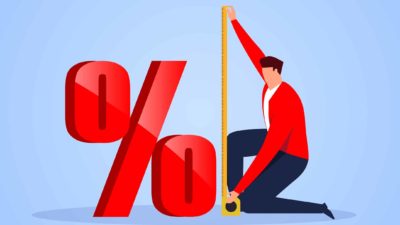The S&P/ASX 200 Index (ASX: XJO) was up 1.1% at 11:30am AEDT.
Which was right when the Australian Bureau of Statistics (ABS) reported on the latest batch of unemployment data.
In the minutes following the release, the ASX 200 dropped 0.5%. Though the benchmark index remains up 0.7% in intraday trading at the time of writing.
Here's why investors got a case of the jitters.
What's happening with the Aussie labour market?
ASX 200 investors aren't favouring their sell buttons because unemployment is rocketing, and the economy is heading for a cliff.
Instead, the labour market remains resilient, with the ABS reporting that the unemployment rate was steady at 4.1% in September. That's in line with the revised figure for August. And this in turn dims the odds of an RBA interest rate cut this year, which is throwing up some headwinds for shares as investors hoping for some 2024 rate relief reassess that outlook.
Commenting on the latest figures pressuring the ASX 200, Bjorn Jarvis, ABS head of labour statistics, said, "With employment rising by around 64,000 people and the number of unemployed falling around 9,000, the unemployment rate remained at 4.1%, where it has generally been over the past six months."
Jarvis added:
Employment has risen by 3.1% in the past year, growing faster than the civilian population growth of 2.5%. This has contributed to the increase in the employment-to-population ratio by 0.1 percentage point, and 0.4 percentage points over the past year, to a new historical high of 64.4%.
The record employment-to-population ratio and participation rate shows that there are still large numbers of people entering the labour force and finding work in a range of industries, as job vacancies continue to remain above pre-pandemic levels.
Indeed, Australia's jobs market is in better shape, at least from the workers' perspective, than it was before we'd ever heard of COVID.
"There are still around 93,000 fewer unemployed people than there were just before the start of the COVID-19 pandemic, when the unemployment rate was at 5.2%," Jarvis said.
Why did the ASX 200 fall on the September labour report?
ASX 200 investors have been waiting a long time for the RBA to begin easing, with stock markets generally performing better in lower-rate environments.
While the US Federal Reserve has delivered its first interest rate cut, Aussie investors are still waiting for inflation to fall within the RBA's target range of 2% to 3%.
And a tight jobs market isn't going to help prices come down.
"The unemployment rate remains one of the trickiest pieces of the RBA's inflation puzzle, remaining firmly stuck around the 4.2% mark for the last five months," eToro market analyst Josh Gilbert said.
"This has been excruciating for those desperately hoping for a rate cut, given the RBA has made clear their target unemployment range is above 4.25%," he noted.









